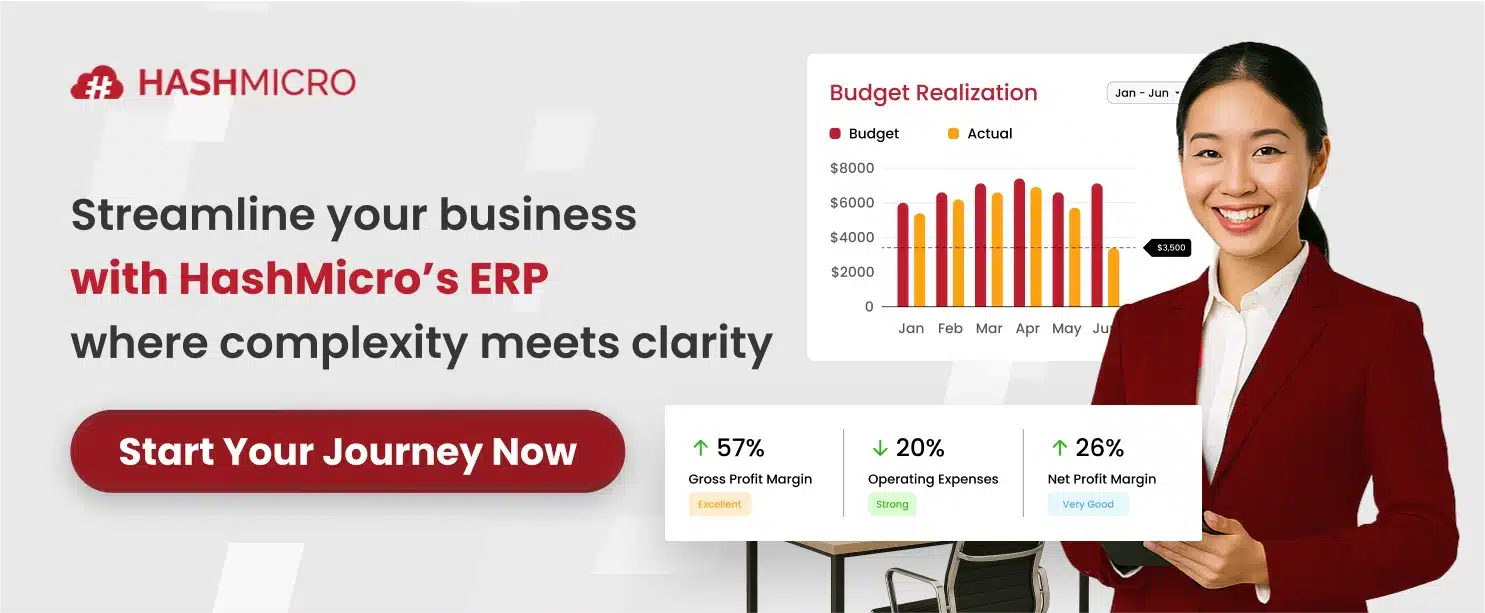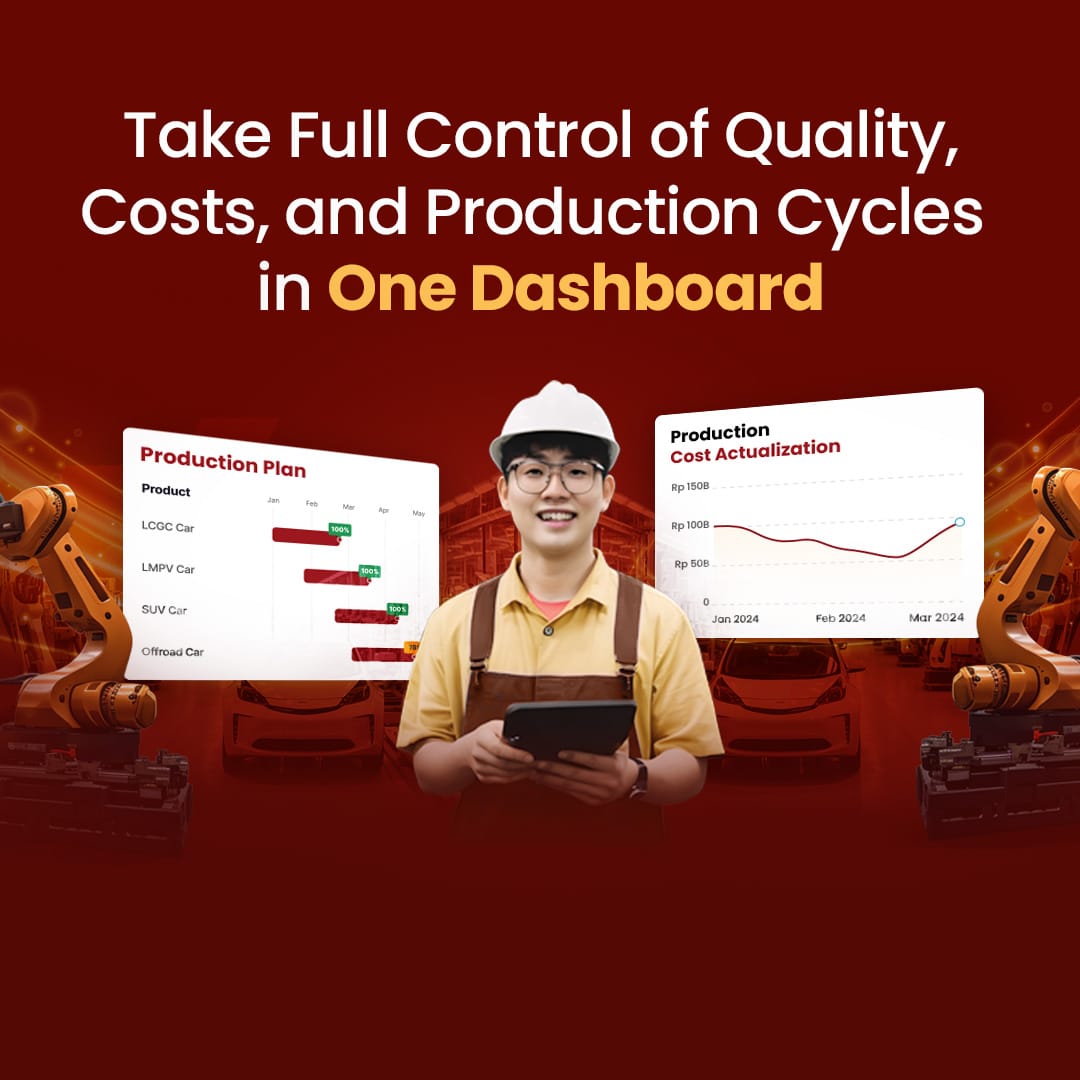Since a long time ago, a lot of companies have been trying to develop a special method to increase their productivity. The first one to pioneer such a method is Toyota with its just-in-time inventory. Several years later, IBM successfully developed material requirement planning (MRP) which their engineer, Joseph Orlicky, initiated.
Even so, these two methods have fundamental differences. Some people consider MRP a “push” system because inventory needs are determined in advance. Besides that, the company runs the production based on the predetermined inventory.
With our fully-featured Inventory Management Software, we will fulfill the demands with optimal inventory levels, monitor stock transfers, forecast inventory requirements, and optimize stock management across multiple locations with the best inventory management software in Singapore.
This article will discuss material requirement planning and its benefits for your business.
Key Takeaways
|
Table of Content:
Table of Content
What is Material Requirement Planning (MRP)?
MRP is a system for calculating the materials and components needed to manufacture a product that is designed for businesses. Usually, manufacturing companies utilize this system. Orlicky designed a material requirement planning system to answer three questions, what is needed, how much it’s needed, and when it’s needed?
Generally, a material requirement planning system requires computer software to automate the production process, such as manufacturing software. The company utilizes the system to create an accurate estimation of how much material the company needs during production and schedule the shipment.
Material Requirement Planning Component
Bill of Materials (BOM)
The BOM is a list of all the raw materials, components, and sub-assemblies required to manufacture a product. It provides a detailed description of each item, including the quantity, unit of measure, and cost. The BOM is essential for accurate planning and forecasting of production requirements.
Master Production Schedule (MPS)
The MPS is a detailed plan that specifies the quantity and timing of production for each finished product. It takes into account the demand forecast, available capacity, and inventory levels. The MPS serves as the basis for production scheduling and procurement of raw materials.
Inventory Management
Inventory management is a critical component of the MRP system. It involves the control of inventory levels, including the identification of minimum and maximum levels, reorder points and safety stock. As a result, effective inventory management helps to minimize stockouts, reduce carrying costs, and improve customer service.
Purchase Management
Purchase management involves the procurement of raw materials, components, and supplies required for production. The MRP system helps to ensure that the right materials are purchased in the right quantity, at the right time, and at the right price. It also helps to minimize lead times and reduce the risk of stockouts.
How Does MRP Work?
The MRP system uses information from the Bill of Materials (a comprehensive list of materials used, subassemblies, and other components needed to manufacture a product, along with their quantities).
The system also uses inventory data, and a master production schedule to calculate the material required and when the production requires those materials. This method is highly effective for any kind of manufacturing company, such as discreet manufacturing or process manufacturing.
This is why a lot of manufacturing companies around the world implement this method. You can also apply another method such as implementing ERP software. Our Manufacturing Software offers you help to increase the productivity and profitability of your manufacturing business with a complete manufacturing system in Southeast Asia.
Initially, material requirement planning depended on mainframe computers to extract data from a bill of materials and create a purchasing and production plan. Later, MRP systems incorporated a feedback function, enabling production managers to enter modifications or updates to the system as needed.
History of Material Requirement Planning
Material Requirement Planning (MRP) is a tool that helps organizations manage their inventory levels and production schedules to meet customer demand.
Material Requirement Planning was first developed in the 1960s by Joseph Orlicky, a former IBM engineer. Orlicky’s idea was to create a system that could automatically calculate the materials required for a product based on the production schedule and the inventory levels.
In the 1970s, MRP was further developed and popularized by Oliver Wight and George Plossl. They expanded the scope of the MRP system beyond just calculating material requirements to include production scheduling, capacity planning, and shop floor control.
In the 1980s, Material requirement planning was enhanced with the development of Manufacturing Resource Planning (MRP II). MRP II extended the scope of MRP to include other resources such as labor, equipment, and facilities.
Today, the Material Requirement Planning system has evolved to include modern technologies such as artificial intelligence and machine learning. The company can integrate the system with marketing, finance, and human resources to formulate a production plan.
This integration enhances efficiency and effectiveness in managing production planning and inventory levels. As a result, the system remains a vital tool for organizations in the manufacturing and production industry.
Material Requirement Planning Process
The Material Requirements Planning process typically involves the following steps:
- Identifying the demand: The first step in the MRP process is to identify the demand for the finished product. This can be done by analyzing historical sales data or by using customer forecasts.
- Creating a bill of materials (BOM): Once the demand is known, a BOM is created that lists all the raw materials, needed to manufacture the finished product.
- Determining net requirements: The MRP system then calculates the net requirements by subtracting the available inventory from the required amount.
- Calculating gross requirements: The system then calculates the gross requirements for each item by adding the net requirements to any existing orders and safety stock.
- Scheduling orders: The MRP system generates production schedules and purchase orders for the raw materials and components needed to meet the demand.
- Monitoring inventory levels: The system continually updates the requirements and schedules to ensure that the necessary materials and components are always available when needed.
- Evaluating the plan: The MRP system evaluates the plan to identify any potential issues or constraints and suggests alternative solutions if necessary.
The material requirement planning system continually reviews and updates the plan as new information becomes available. This ensures that production schedules and inventory levels are always optimized to meet customer demand while minimizing costs and lead time
Pros and Cons of Using MRP
Pros
- Accurate inventory management: The MRP system enables organizations to accurately track inventory levels, which helps avoid stockouts and excess inventory.
- Efficient production scheduling: The system can assist with developing production schedules that optimize resources and reduce production time.
- Improved customer service: The system can help organizations deliver products to customers on time, resulting in improved customer satisfaction.
- Better visibility: The MRP system provides visibility into the supply chain, enabling organizations to identify and address potential issues before they become problems.
Cons
- Cost: Implementing an MRP system can be expensive, including the cost of software, hardware, and employee training.
- Complexity: The system can be complex and difficult to implement, requiring specialized knowledge and expertise.
- Dependence on accurate data: The system relies on accurate and up-to-date data to function effectively, which can be a challenge if data is incomplete or incorrect.
- Limited flexibility: The MRP system is a “push” system that relies on predetermined inventory needs. This can limit the ability to respond quickly to changes in demand or supply chain disruptions.
MRP Implementation
Implementing an MRP system may seem complicated, but it’s crucial for companies aiming to enhance their supply chain operations. The initial stage involves collecting all vital data, including sales forecasts, production schedules, and inventory levels.
The MRP system then uses math formulas and algorithms to determine the required materials and create a plan for ordering and receiving them. Furthermore, after implementing the system, it is crucial to ensure continuous maintenance and updates to keep the data accurate and up-to-date.
This involves regularly reviewing and adjusting various parameters of the system, such as lead times and safety stock levels, to accommodate any fluctuations in supply and demand. It is important for businesses to understand the unique needs and challenges their company faces in its production processes.
By having this comprehension, businesses can effectively evaluate the features and capabilities of different software to choose the best manufacturing software that aligns with their specific requirements.
From MRP to ERP
Because of its capability to effectively increase the productivity of manufacturing companies, a lot of people start to develop MRP II. Since MRP II other industries besides manufacturing can use it. This is the reason why the ERP software has started to gain its name among companies across the world.
If MRP is popular among manufacturing companies, a lot of other industries begin to implement ERP in their company. Industries such as retail, construction, banking, and professional service are a few among many others. Even so, MRP remains an integral part of manufacturing companies to this day.
Additionally, you can browse through articles focused on bill of materials templates, providing practical insights and templates to enhance your documentation and manufacturing efficiency.
Conclusion
Material requirement planning is an effective method to increase the productivity of manufacturing companies. Since its first development back in 1964, the system successfully integrated into many business aspects and made it easier for them to create a production plan.
MRP system proves that it’s still an important part of a manufacturing company. Its development in the ERP systems makes this method suitable not only for manufacturing companies but also for other industries. Cloud ERP software can help to automate various aspects of business, suitable for multiple types of companies.
You can make more accurate decisions with the support of the most advanced and best business management ERP software of HashMicro. Click here to get a free demo of our tour product!
Frequently Asked Questions
-
What types of manufacturing companies can benefit from MRP systems ?
Material Requirements Planning systems are most beneficial for manufacturing companies that produce goods with complex bills of materials (BOMs) and have a high volume of production orders. These companies may include those in the aerospace, automotive, electronics, and food and beverage industries, among others.
-
What is the difference between MRP I and MRP II?
MRP I calculates the materials and components needed to meet the production schedule based on the demand for finished products. While MRP II includes additional planning and scheduling capabilities, such as capacity planning, shop floor scheduling, and production control.
-
How much does an MRP system cost?
The cost depends on the size of the company, the complexity of the system, and the features included. Generally, an MRP system can cost anywhere from a few thousand to several hundred thousand dollars.
-
How long does it take to implement an MRP system?
The timeline for implementing an MRP system can vary depending on the complexity of the system and the readiness of the company. On average, it can take anywhere from several months to a year to fully implement the system.
-
What are some common challenges businesses face when implementing MRP?
Common challenges businesses face when implementing an MRP system include data accuracy and consistency, system integration with existing systems, employee resistance to change, and training and support. It is important for companies to address these challenges proactively to ensure a successful implementation.
























































